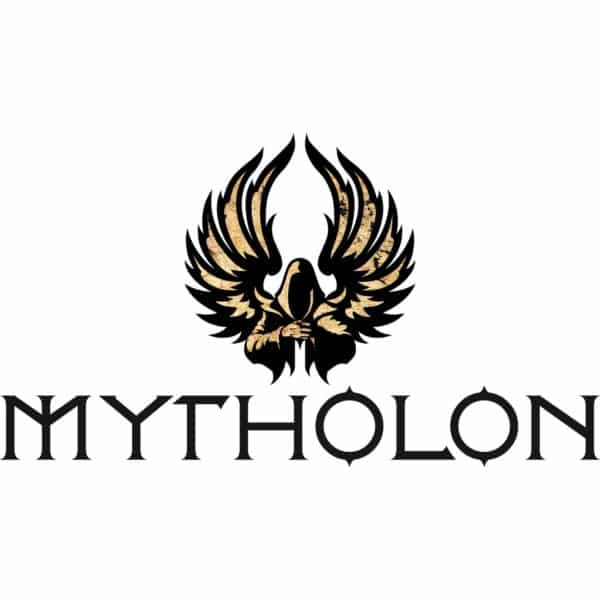by Charles J. Lockett, Senior Content Contributor & Medieval Expert
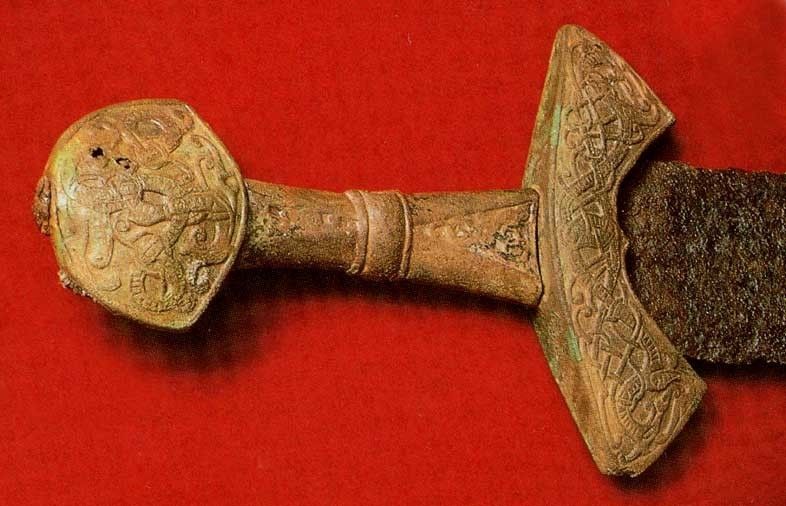
Suontaka was a bustling hub of trade and warfare in Iron Age Finland. One of the finest swords in Medieval Europe was laid to rest with a high-status woman, dressed in her finery. Almost a thousand years later, the Suontaka Sword – and the person it was buried with – remain an enigmatic insight into the Dark Ages. An explosive new genetic study has added a new dimension to the Suontaka woman: was she a non-binary person, buried in a precise fashion by her mourners to display her identity only to the gods? Alas, since Thor and Oðinn are silent, we must rely on modern archaeology to unlock the gender identities of the past.
A Chance Discovery
In late October 1968, utility workers were working on a water pipeline in the sleepy town of Tyrväntö in central southern Finland, on the shores of the lake which bears the same name. Amongst the rubble and soil of the water pipe trench, the workers made a jaw-dropping discovery: a mucky but clearly staggeringly well-preserved bronze-hilted sword. The utility company immediately called in archaeologists to examine the site. Local historian Oiva
Keskitalo recognised that the workers had clipped the edge of a burial, demarcated by a patch of dark soil in the earth, where the bronze sword was found. Braving icy late autumn conditions which got as cold as 14ºF (-10ºC), the excavation team unearthed a grave that has puzzled archaeologists ever since.
Buried With Treasure
The grave contained the fragmentary remains of a single individual. Although the skeleton was mostly decomposed (only two fragments of femur could be recovered intact from the ground), enough remained to demonstrate that this was indeed a peaceful burial, laid into the ground with a plethora of fine grave goods. These included a second hiltless sword-blade with fine silver inscriptions, a sickle, a pennanular brooch, a gorgeous twin-spiral chain-holder, and two oval brooches which were still attached to the remains of textile cloth. These objects all dated to between 1040 CE and 1174 CE, a violent and tumultuous time in the region’s history when contending states in Sweden and Western Russia were colonising Finland and vying for control of the wild inland regions, which were inhabited by the Sámi people.
The Finest Sword in Viking Europe
The bronze-hilted sword itself – now known as the Suontaka Sword after the local historical Viking village, is an unparalleled work of art. The sword blade is a spectacularly well-preserved but fairly unremarkable fine sword blade, likely of Frankish manufacture like many of the fine blades that found their way into Viking hands – either by trade or by pillage. But it is the hilt that makes this weapon utterly unique. Its shape is quite unlike the ‘typical’ idea of a Viking sword: it has neither a short, Scandinavian cross-guard, nor a broad Norman one – instead, it conforms instead to Type Æ, in Petersen’s typology. It is a wide canvas for artisan who made it, filling the available space with gorgeous curling knotwork in the Urnes style: this artistic tradition which features overlapping serpents known as ‘great beasts’ is named after the stave church in Urnes which features its finest and earliest examples. We are proud to present a gorgeous Viking blade inspired by the Suontaka Sword, forged from hand-forged steel and cast bronze, just as the original was.
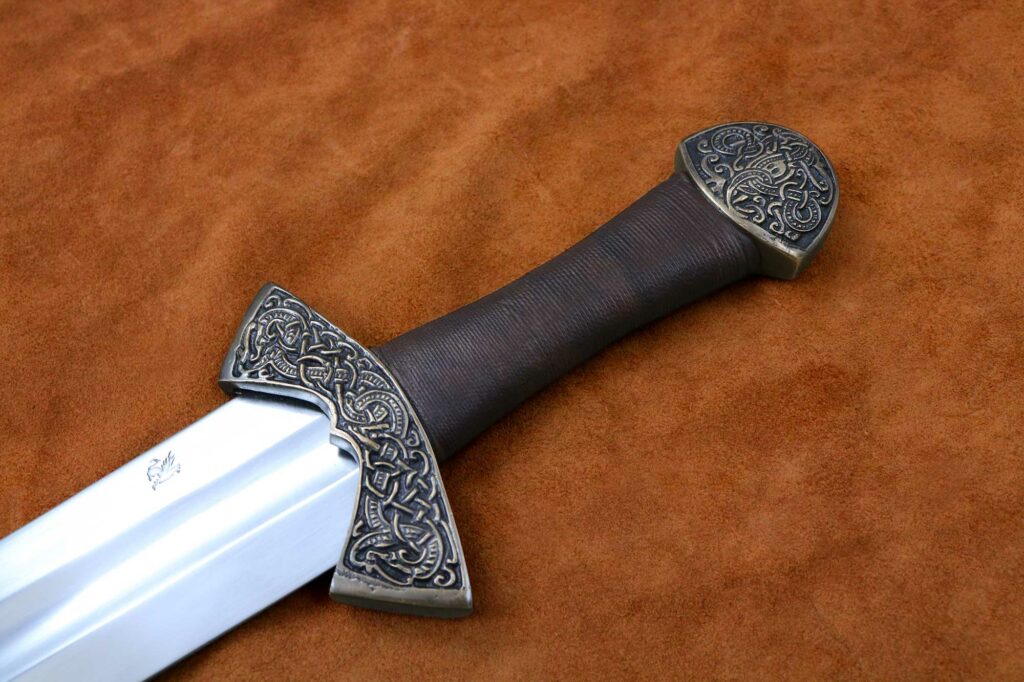
An Historical Puzzle
The reason that this collection of grave objects were puzzling to the archaeologists in the 1960s is that they are were rare example of a grave containing a mixture of goods associated with both of the genders that are thought to have existed in Viking society. Swords were conceived of as male objects, whilst the fine jewellery was thought of as associated only with feminine graves. Sickles are broadly associated with female graves, although they appear in masculine graves as well. Amidst the head-scratching, archaeologists attempted to discern a second burial, which might account for the two distinctly ‘male’ weapons, but they found no trace whatsoever and were forced to rule it out as a possibility. Archaeologists have assumed, therefore, that this was the burial of a woman, dressed in woman’s clothing and jewellery, buried with items that reflected both male and androgynous elements.
Interpreting Gender in Viking Europe
Viking warrior women have been a subject of scholarly debate ever since their rediscovery in the Norse sagas by Victorian antiquarians in the 19th-century. Initially, hidebound archaeologists (who were almost invariably male) classified tombs rigidly by the assumed nature of their burial finds: ‘this must have been a male warrior’s grave because it is filled with weaponry’, or ‘this must be the tomb of a woman because it features domestic goods’. Whilst modern scholarship says that the early antiquarians were broadly correct to assume that Norse societies were strongly patriarchal and male-dominated, the picture does appear to be a good deal more complex than men = warriors, women = homemakers (we can point to this assumption stemming very much from elite Victorian gender roles!). This traditional picture began to be challenged in the 1970s, and by the 2010s, genetic testing had begun to shed new light on sex and gender in Viking warrior culture. Several high-profile ‘male’ warrior tombs, replete with martial material culture like swords, spears, shields and horses, have, in recent years, been shown conclusively to contain women. The Birka burial, thought since its discovery in the 1870s to be that of a high-ranking male Viking ‘officer’, was genetically analysed in 2017 and found to contain a woman. This has led to a more nuanced understanding of gender in Viking society, where women are no longer understood to be exclusively domestic – but also feature as warriors and queens in their own right. We might therefore place Viking society a little closer to the Celtic traditions of warrior-queens, like Boudicca or Queen Medb. There can be no doubt that these were patriarchal warrior cultures which privileged the prestige associated with violence and conquest, but also that women could also occasionally carve out a place within those male-dominated hierarchies. However, the turn towards genetic testing has brought another facet of ancient life into clearer focus, bringing us closer to a more nuanced understanding of gender and sex in the Middle Ages.
A New Insight into the Suontaka Woman
In July 2021 (shortly before writing this piece), archaeologists have published a study in which they have applied genetic techniques to the woman in the Suontaka grave – and whilst they were only able to extract very little genetic information due to the age and deterioration of the surviving bones, they were able to determine with a high degree of confidence that the individual in the grave had XXY chromosomes. This means that the person in the grave likely had a condition called Klinefelter syndrome. Although we have very little evidence from the remains of the Suontaka woman, we know that people with Klinefelter syndrome are physiologically male, but experience a number of female physiological characteristics, which become more pronounced during puberty: wide hips, the development of breast tissue, and a lack of facial hair. A handful of other Viking burials have been discovered which display XXY chromosomes in genetic analysis – but (as far as we at Medievalware know), all of the others are typically ‘male’ in burial objects and clothing.
Who was the Suontaka Woman?
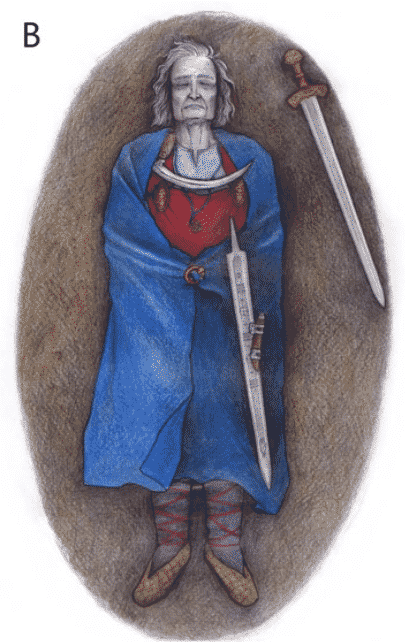
How can we interpret this discovery, within the lens of sex and gender in Medieval Europe? We’ve chosen here to refer to the Suontaka body as a woman, using she/her pronouns – because (as far as we can tell), she was buried as such: with the jewellery and clothing of a woman, plus some distinctly male objects. Today, we might refer to a person with Klinefelter syndrome as intersex – but as we know, gender identity and biological sex do not necessarily correlate. The Suontaka burial might be that of a non-binary person: they may have rejected strong identity with either gender, and some elements of the burial do suggest this. In more recent years, archaeologists have been reluctant to strongly associate the Suontaka Sword directly with the body, since it was discovered at the periphery of the burial: it is now generally though that the Suontaka Sword may have been buried in the Suontaka woman’s grave as an ancenstor-offering some time after their burial. More useful for discussions of identity is the second unhilted sword-blade, which was undamaged and decoratively engraved, closely associated with the body and likely gripped in the hands over the chest at burial. This might well indicate both high status and an androgynous identity. It may have been that it was indeed this high-status specifically that permitted the more free expression of her gender identity – we know that Suontaka village was a wealthy and connected place, deriving this from its position along fur-trading routes. Whilst there remains the possibility that the Suontaka woman’s presentation in burial might not match their gender identity in life, since their burial would have been displayed and arranged by others after their death, this seems less likely, since Iron Age burials seem always to be closely connected to intensely personal objects.
The Suontaka Woman, from Molainen et al. (2017).
The Future of Queer History
Trans and non-binary history is only in its bare infancy, as academic begins to change to include more diverse individuals who can bring their own perspectives to bear, but already we are beginning to see instances of Medieval societies grappling with non-binary and trans identities. The case of John/Eleanor Rykener is one such case, that may well receive more attention in the future: Rykener was a bisexual sex-worker in 14th century London who wore both men and women’s clothing, and they appear in the court record questioned for the crime of sodomy, which was defined as sexual activity between two men. The court is clearly unsure of how to define Rykener, and so they transcribe their answers in Latin, which has the option to use gender-neutral pronouns (today, we might use they/them). As the field of queer history develops, we expect to have a much deeper understanding of the woman in the Suontaka grave – and of the Suontaka sword itself.
Bibliography:
Goldberg, J. (2014). “John Rykener, Richard II, and the Governance of London”. Leeds Studies in English. 45: 49–70. (available here)
Hedenstierna-Jonson, C, Kjellström, A, Zachrisson, T, et al. (2017), A female Viking warrior confirmed by genomics. Am J Phys Anthropol. 2017; 164: 853– 860. (available here)
Moilanen, U., Kirkinen, T., Saari, N., Rohrlach, A., Krause, J., Onkamo, P., & Salmela, E. (2021). A Woman with a Sword? – Weapon Grave at Suontaka Vesitorninmäki, Finland. European Journal of Archaeology, 1-19. (available here)
Petersen, J., De Norske Vikingesverd: En Typologisk-Kronologisk Studie Over Vikingetidens Vaaben, Kristinia : J. Dybwad (1919)

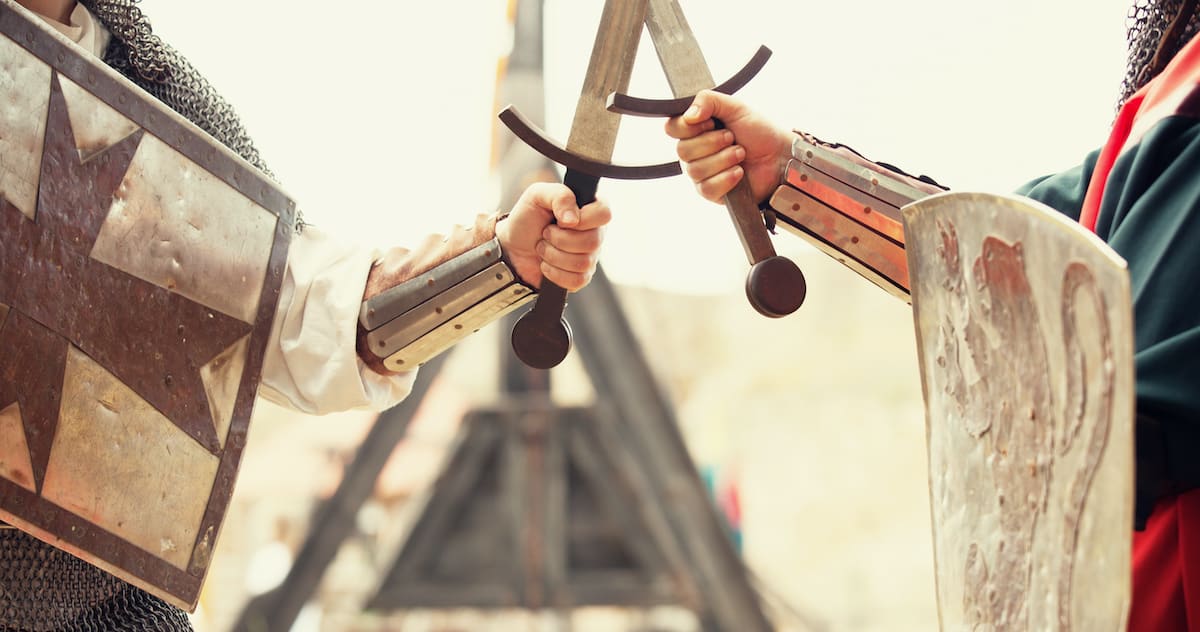 Historical Swords
Historical Swords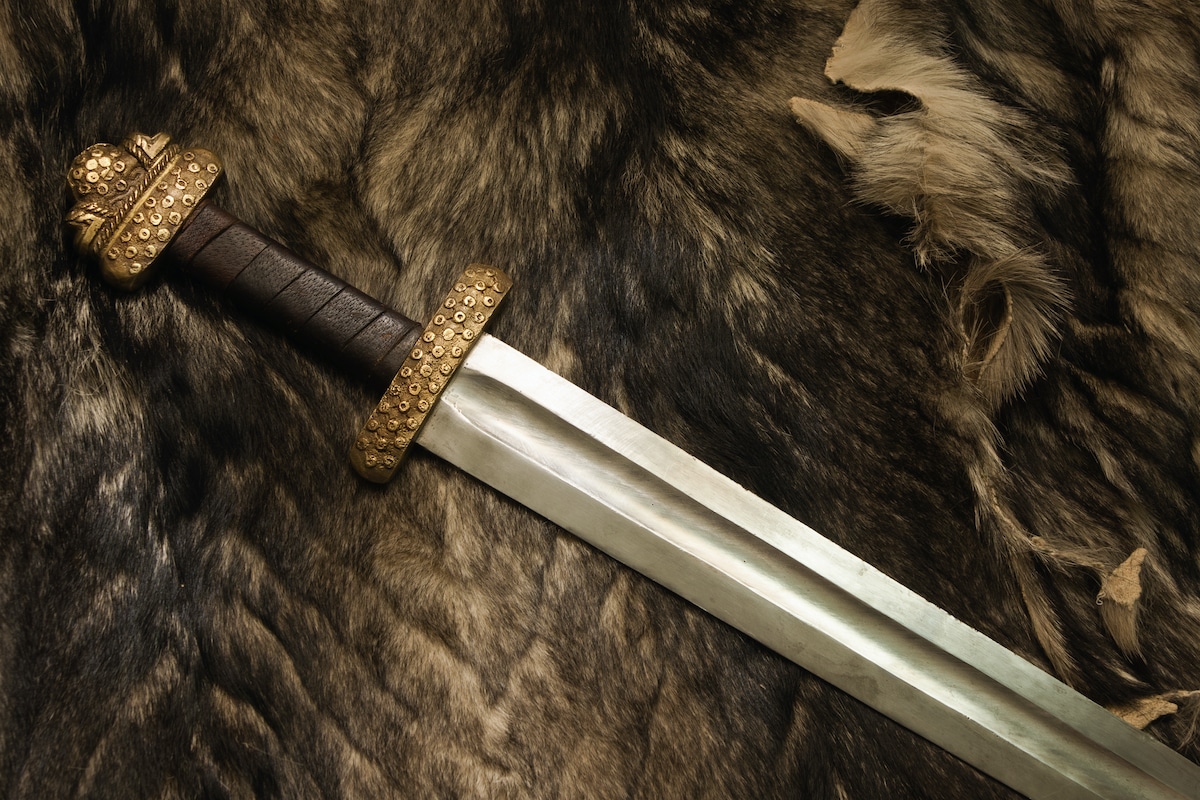 Norse & Viking Swords
Norse & Viking Swords Templar Swords
Templar Swords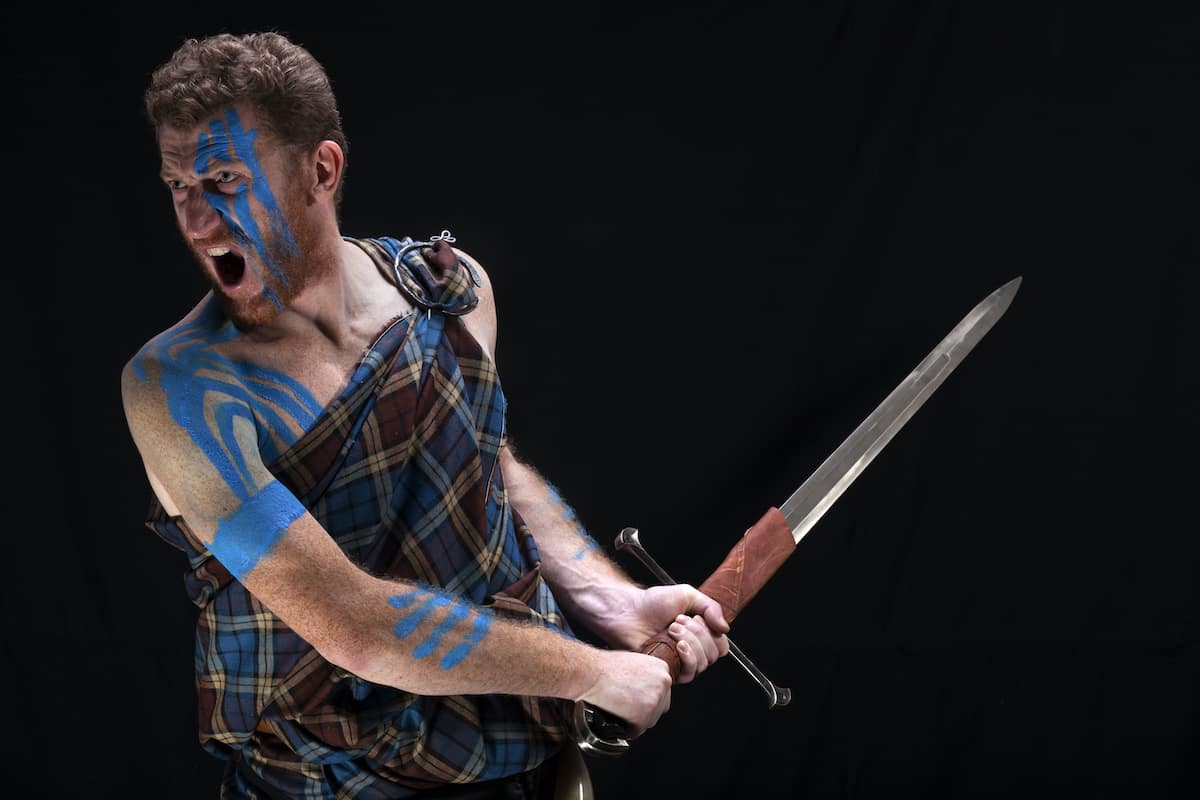 Claymore Swords
Claymore Swords Fantasy Swords
Fantasy Swords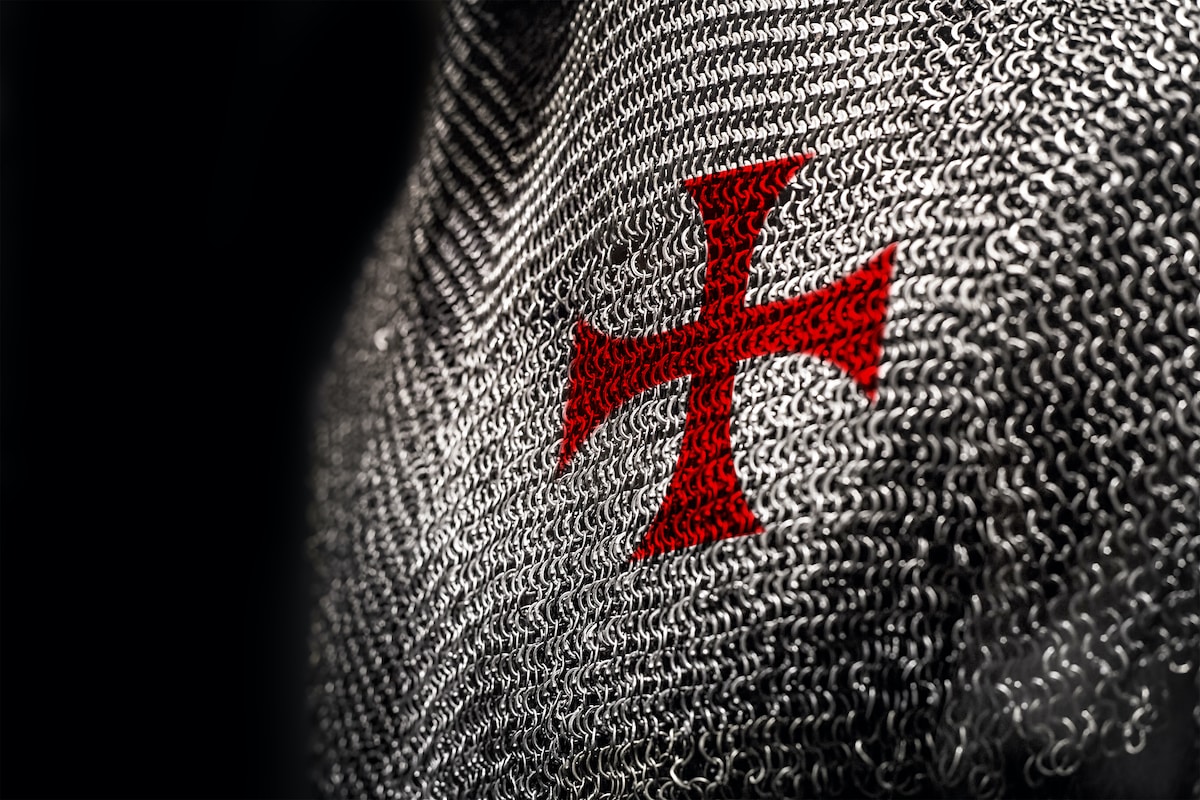 Chainmail
Chainmail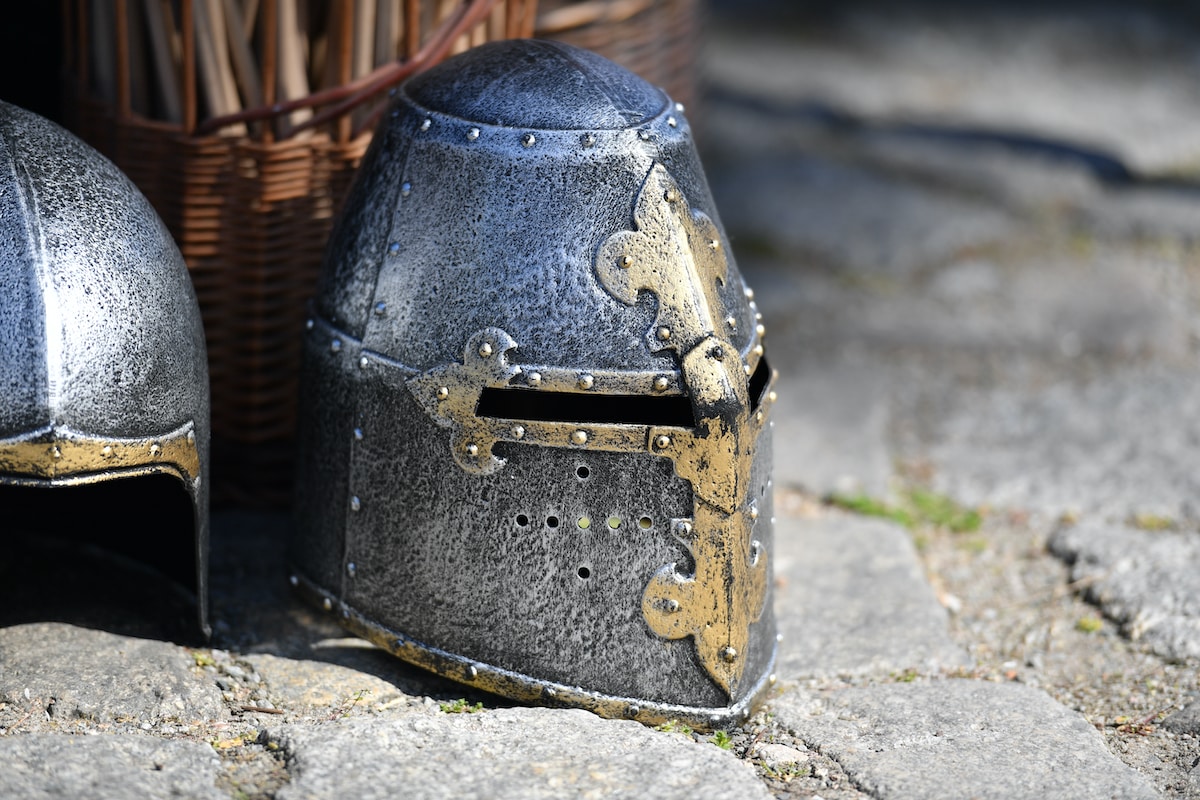 Helmets
Helmets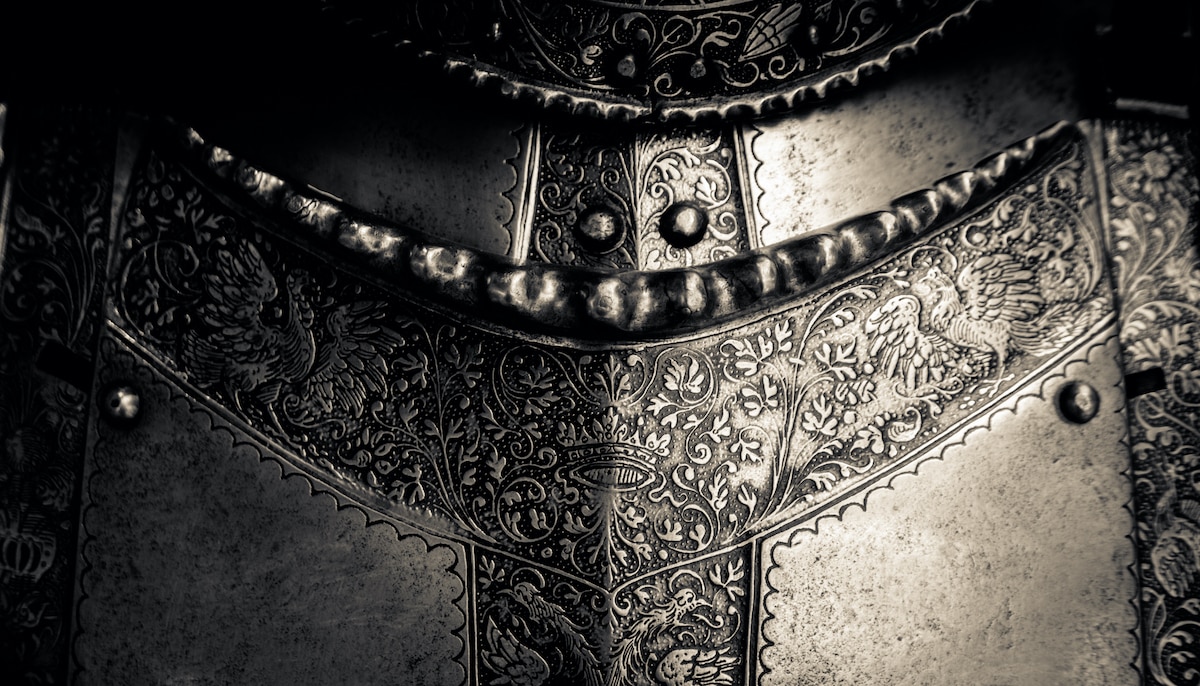 Torso Armor
Torso Armor Bracers and Arm Protection
Bracers and Arm Protection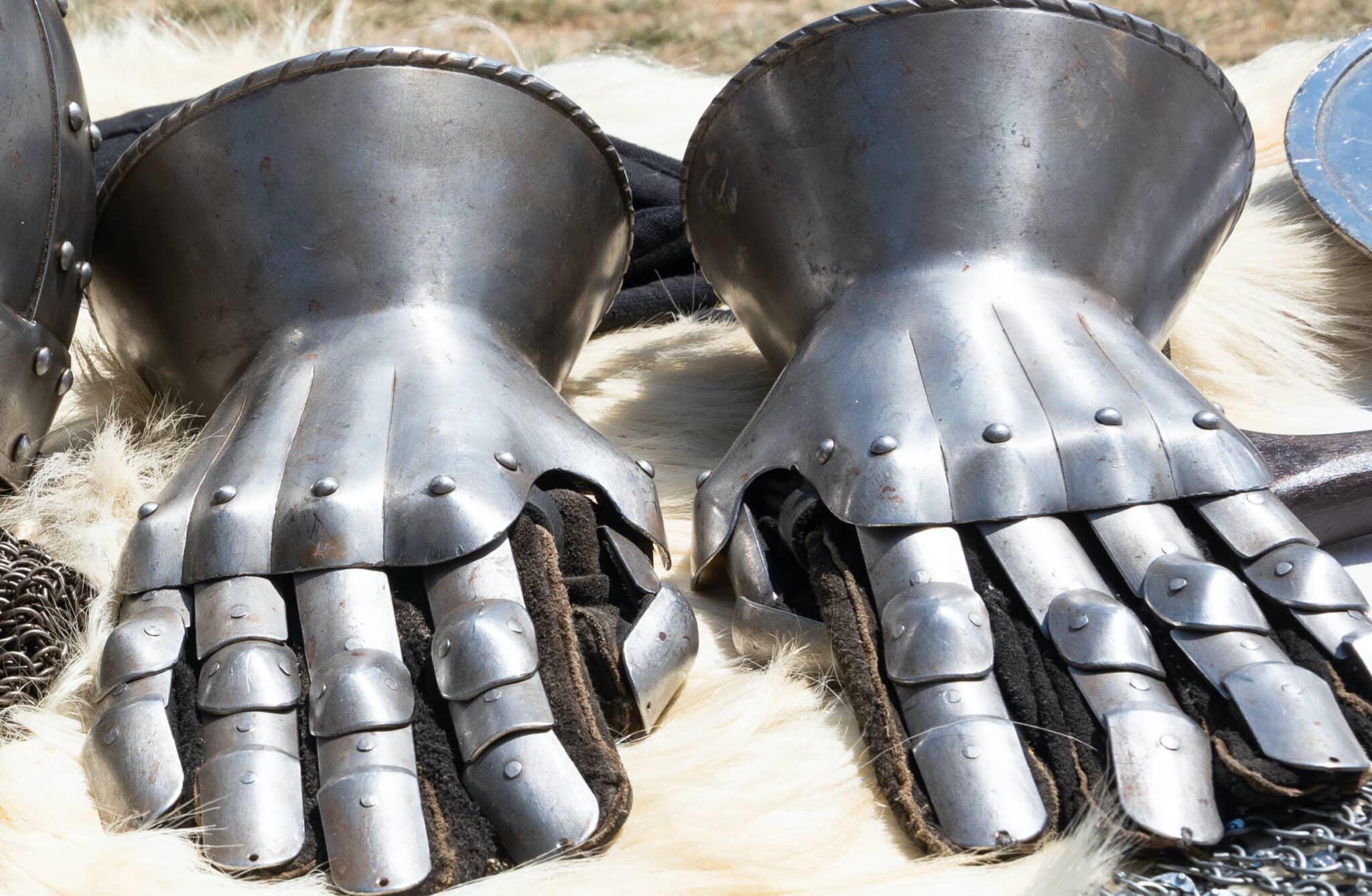 Gauntlets
Gauntlets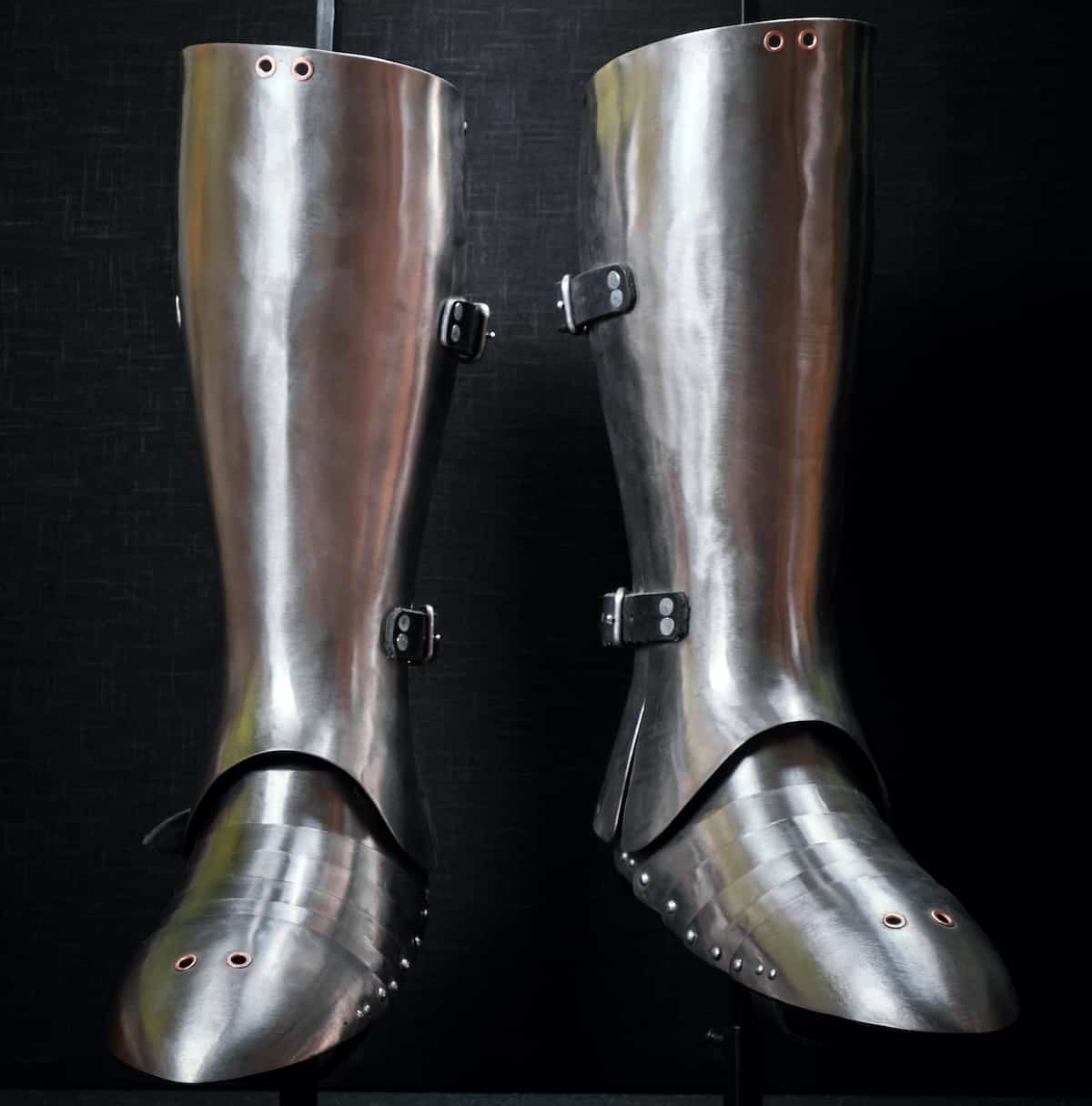 Leg Armor
Leg Armor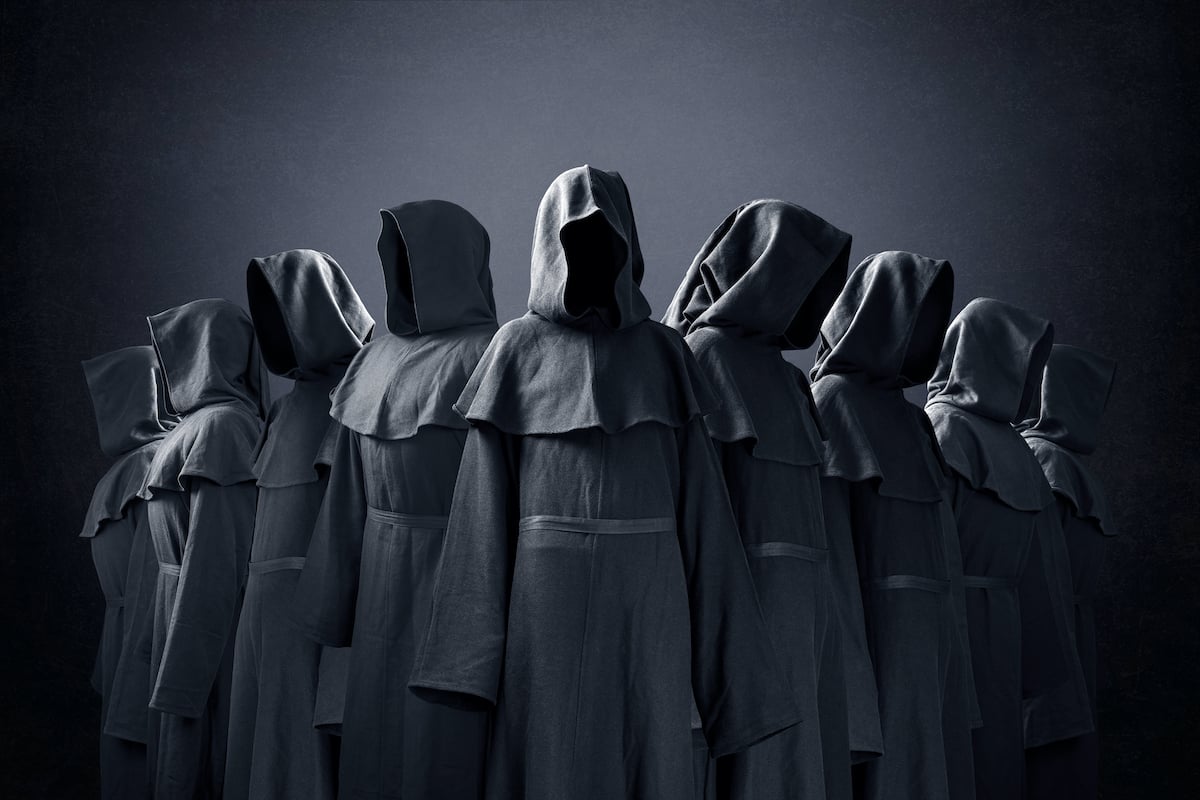 Cloaks
Cloaks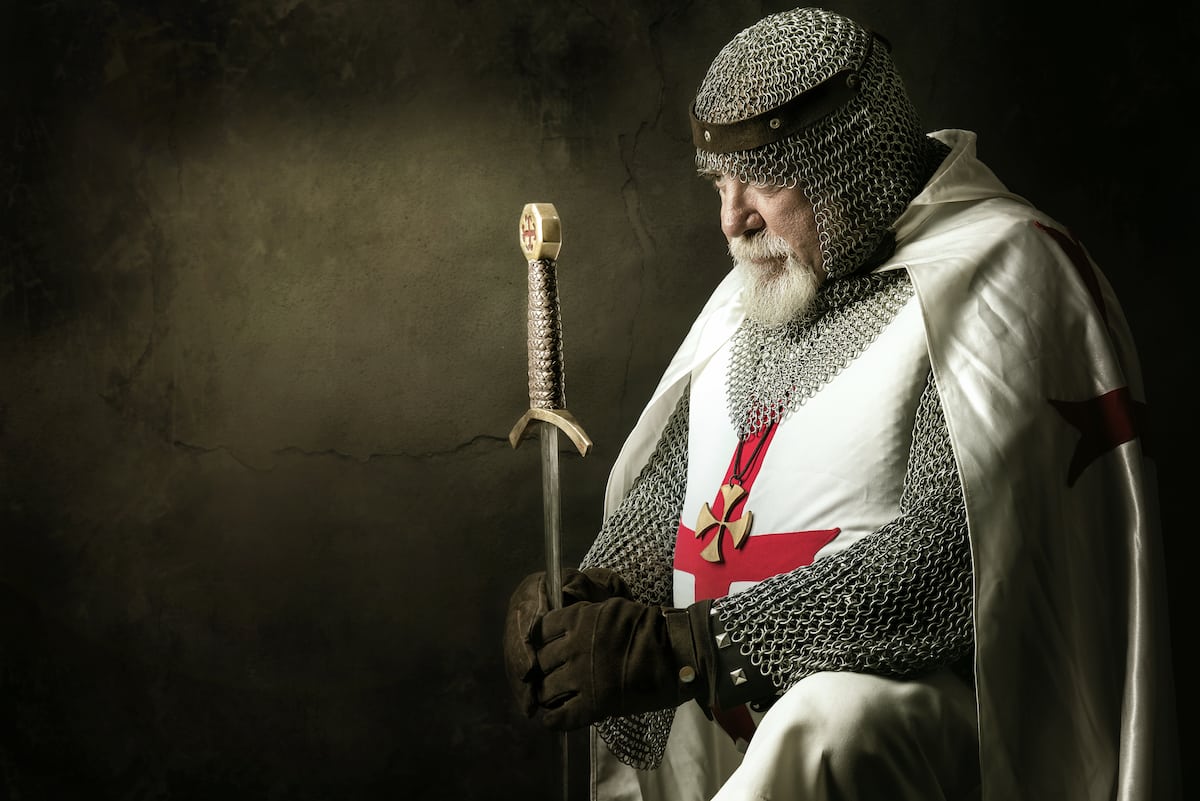 Tabards
Tabards Shirts
Shirts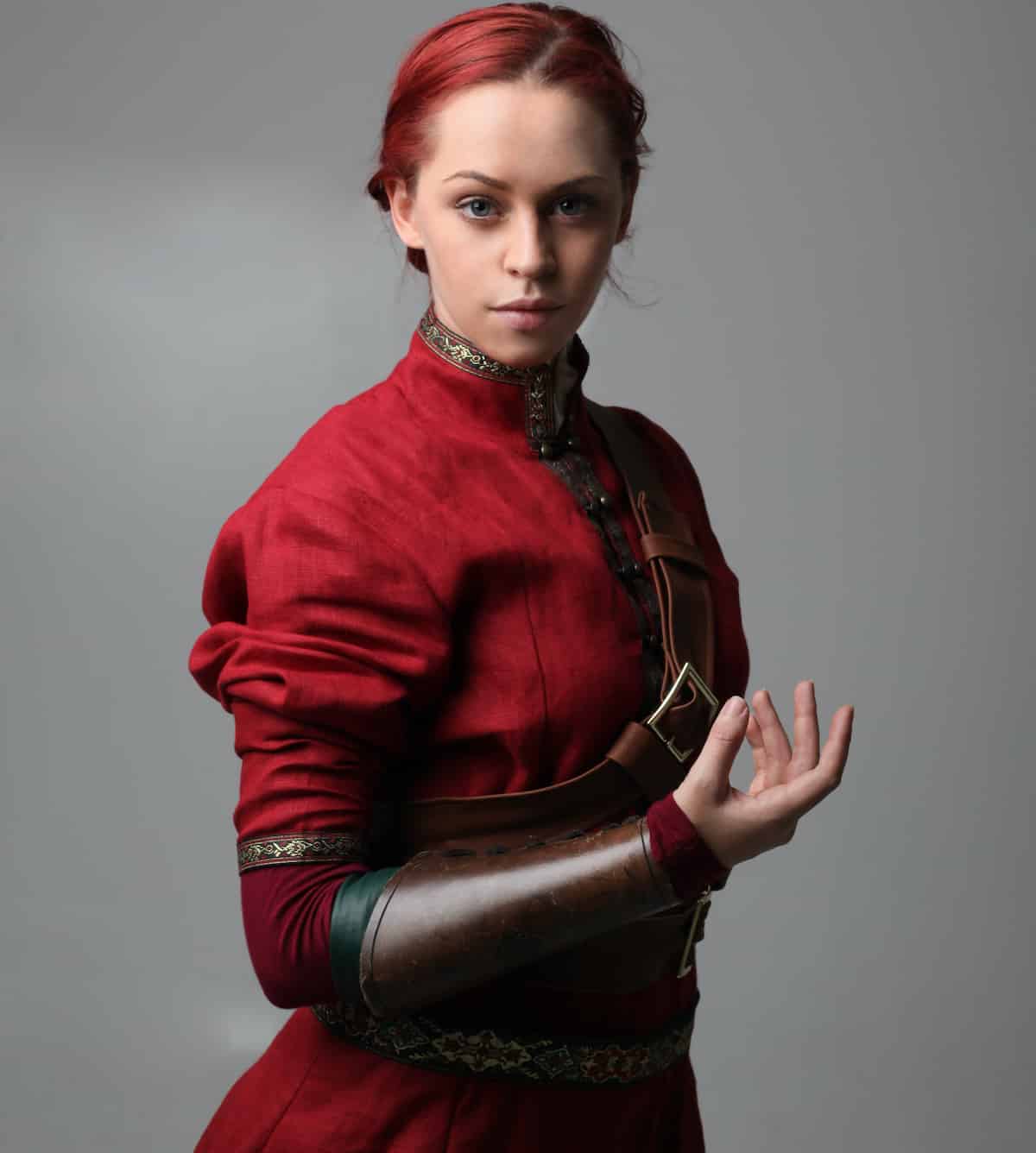 Tunics
Tunics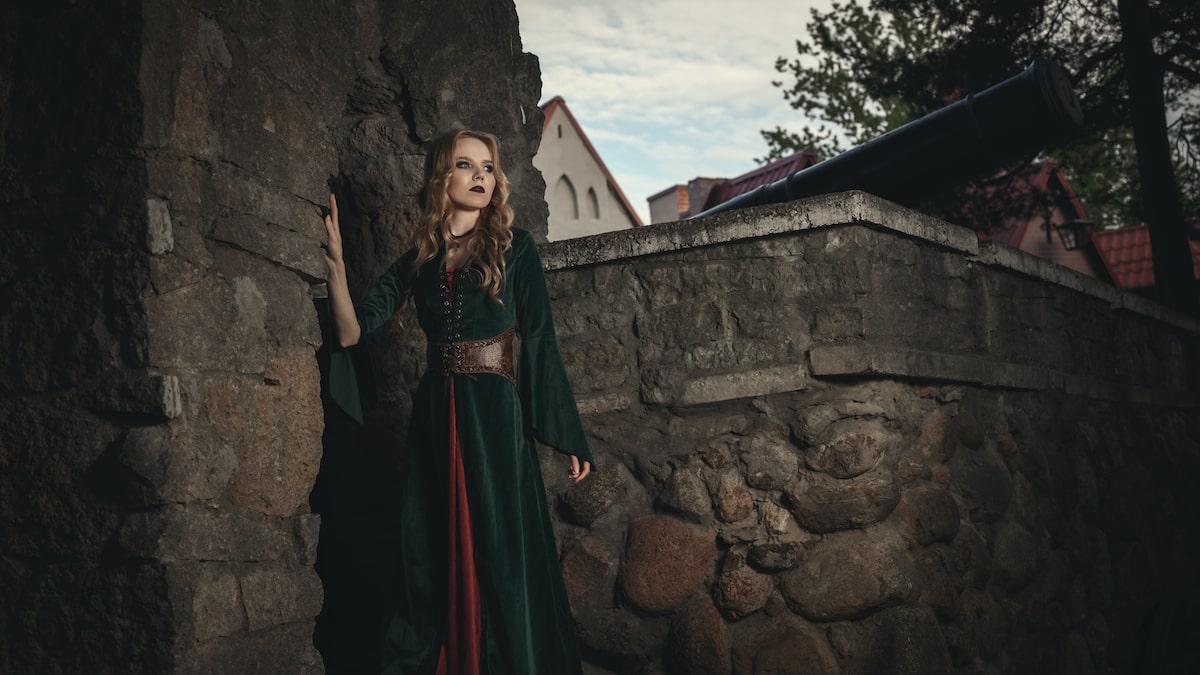 Dresses
Dresses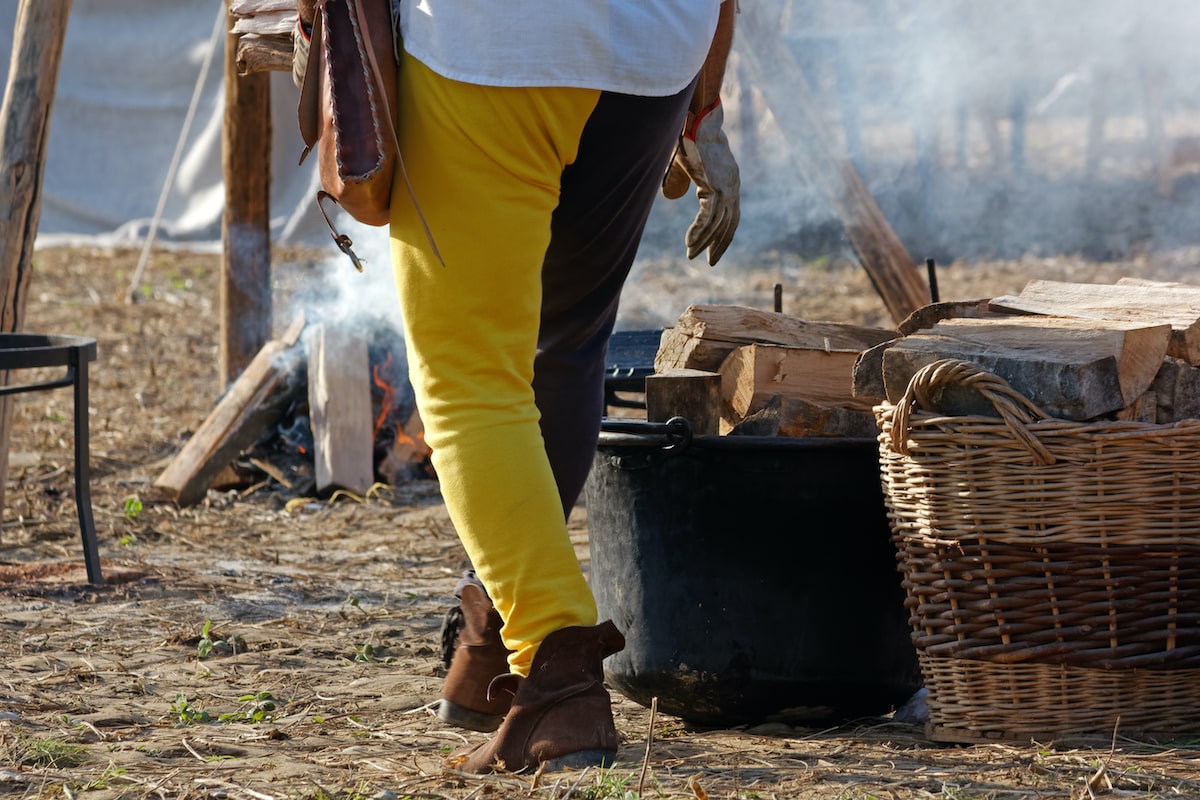 Pants
Pants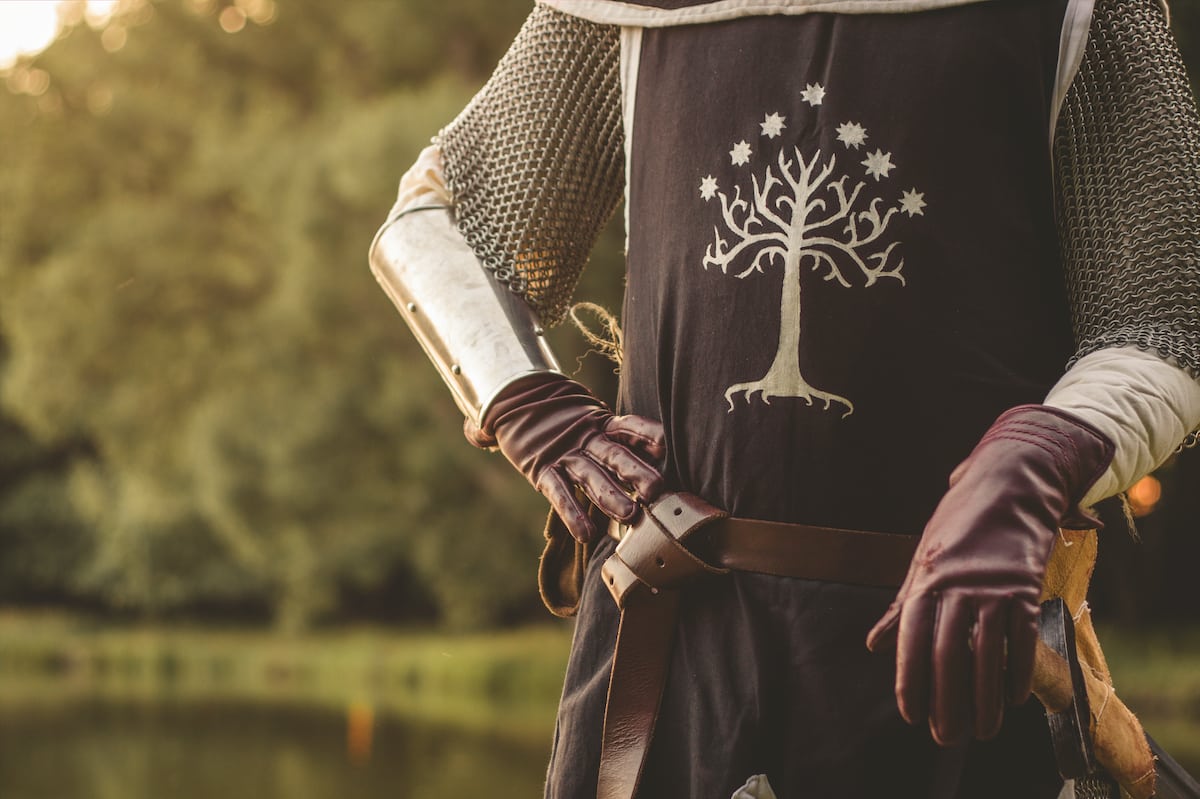 Gloves
Gloves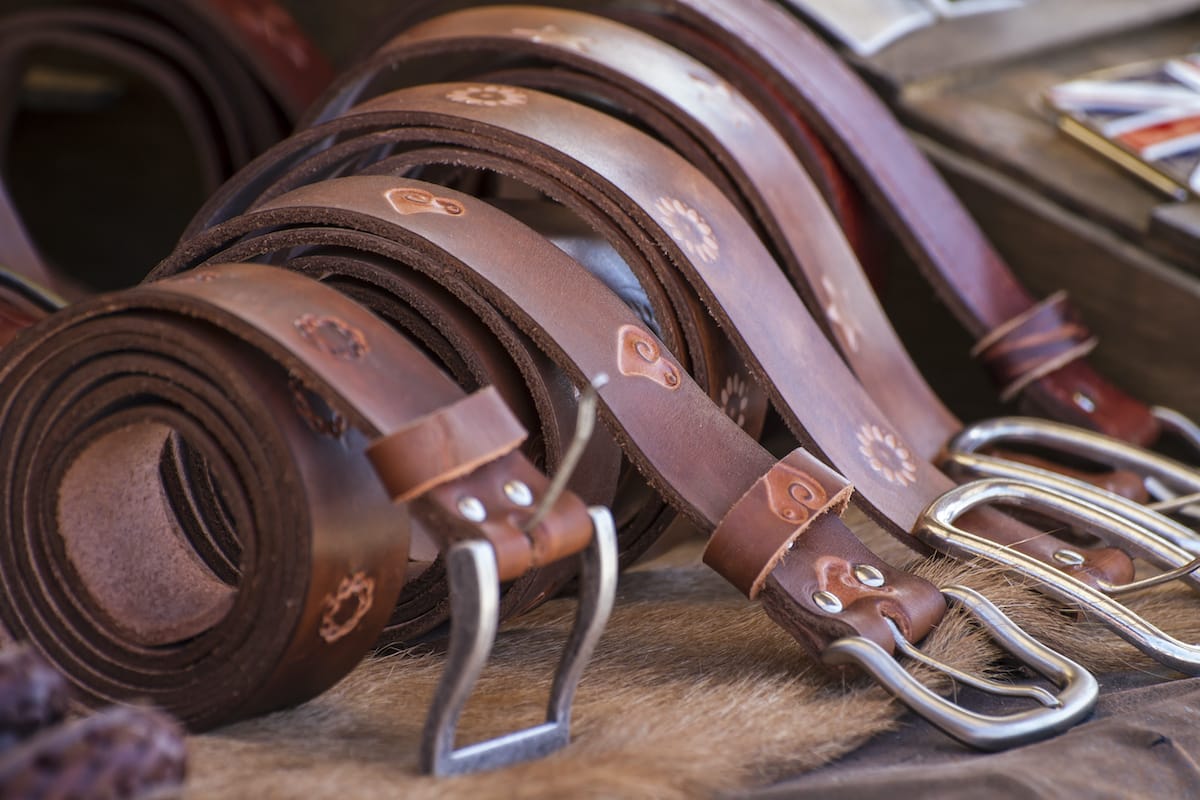 Belts
Belts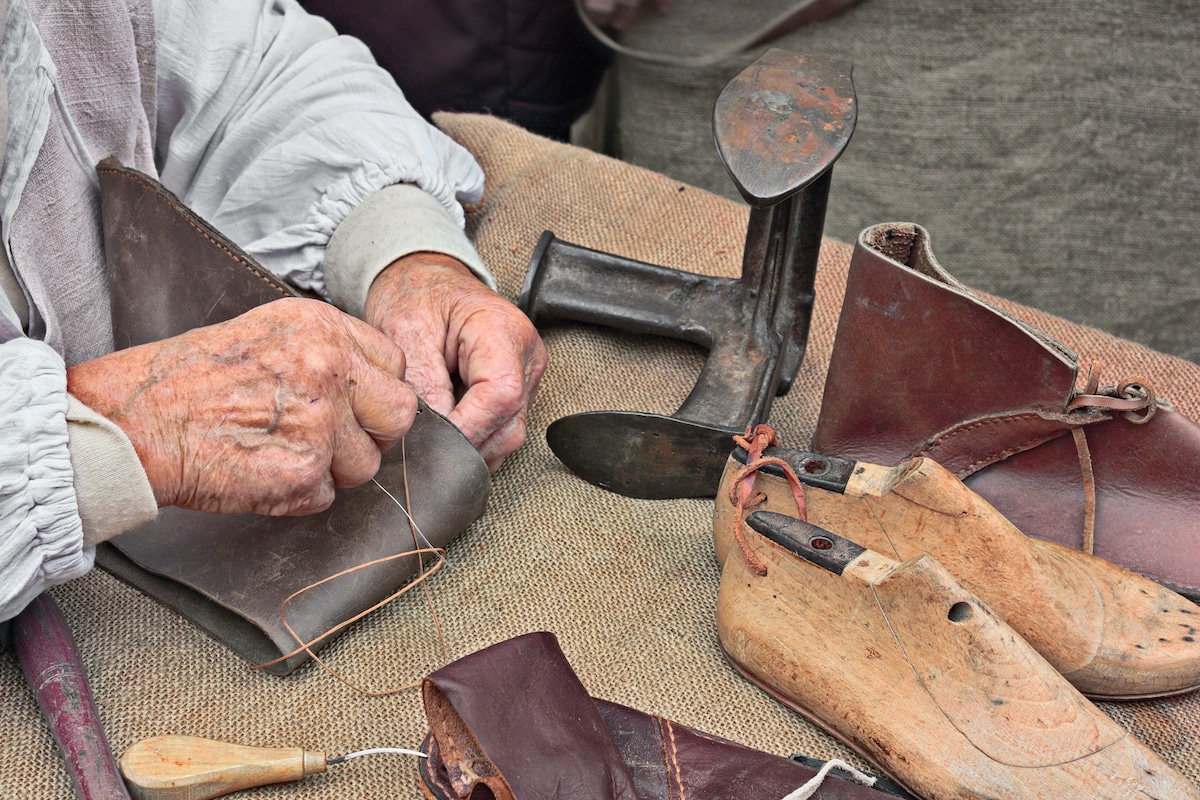 Shoes
Shoes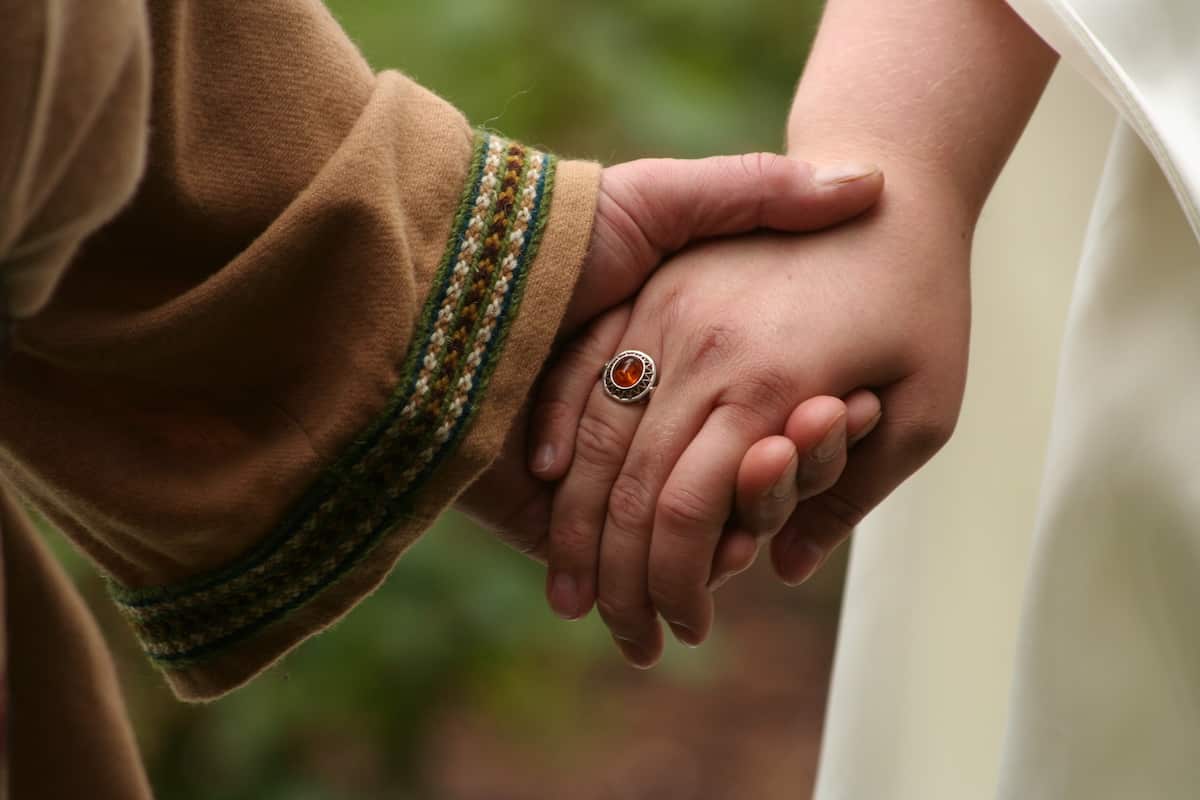 Rings
Rings Necklaces & Pendants
Necklaces & Pendants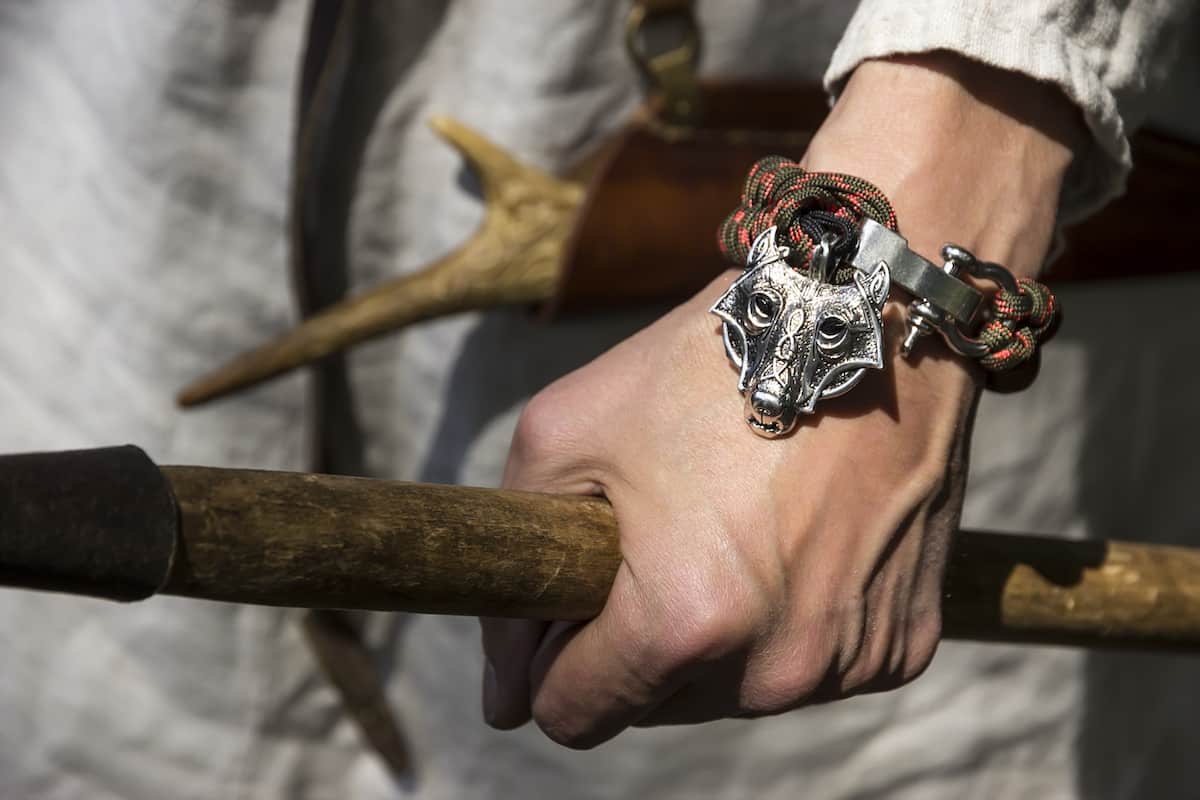 Bracelets
Bracelets